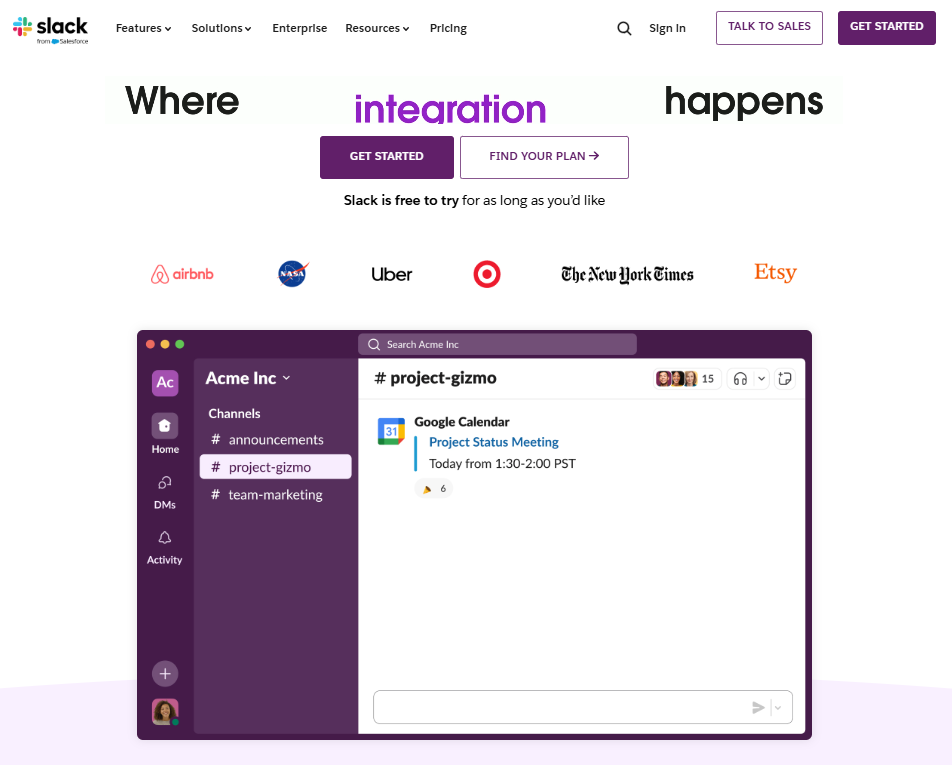For More Free Videos, Subscribe to the Rhodes Brothers YouTube Channel.
“Meetings are death.” These aren’t just words—they’re a wake-up call from Elon Musk, one of the most innovative minds of our time. If you’ve ever felt trapped in a cycle of endless meetings or struggled to find clarity in your workday, you’re not alone. Productivity doesn’t have to be elusive, and Musk’s strategies—designed to revolutionize Tesla’s workflow—can transform your life, too.
Elon Musk’s productivity system isn’t about working harder; it’s about working smarter. It’s designed to eliminate inefficiencies, empower individuals, and create a direct path to achieving meaningful results. In this blog, we’ll break down his four core principles, share actionable strategies, and reveal tools you can use to implement them in your own life.
As John S. Rhodes of the Rhodes Brothers put it:
“Elon Musk doesn’t just want you to work harder; he wants you to work better by focusing on what truly matters.”
If you’ve ever wondered how to boost productivity, cut unnecessary tasks, and focus on what truly drives results, this post is for you.
TL;DR
Here’s a quick overview of Musk’s productivity system. Dive deeper into the blog for actionable steps and tools to make these principles your own:
- Eliminate Excessive Meetings: Meetings kill productivity. Only attend when it’s absolutely necessary.
- Walk Out of Unproductive Meetings: If you’re not adding value, leave. Use your time for something impactful.
- Communicate Directly: Skip the chain of command. Go straight to the person who can solve the problem.
- Make the Right Thing Happen: Focus on rational decision-making and take direct action to achieve results.
Now, let’s break these down, step by step.
-
Eliminate Excessive Meetings
Meetings are often seen as necessary, but according to Musk, they are the biggest productivity killer in large organizations. He’s not wrong.
Why Meetings Are a Problem
- They interrupt deep, focused work.
- They often include people who don’t need to be there.
- They rarely lead to actionable outcomes.
Actionable Steps to Reduce Meetings
- Audit Your Calendar: Take a hard look at your weekly schedule. Which meetings are truly necessary? Cancel the rest.
- Set Clear Agendas: For every meeting that remains, set a specific purpose and agenda. If the goal isn’t clear, the meeting shouldn’t happen.
- Adopt Asynchronous Tools: Tools like Slack, Notion, and Loom allow team members to share updates without disrupting each other’s work.

Pro Tip: Use Elon’s rule of thumb—if a meeting isn’t driving value for the customer, it’s not worth your time.
-
Walk Out of Unproductive Meetings
Musk encourages his employees to leave meetings or calls as soon as they realize they’re not adding value. While this might seem bold, it’s a practice rooted in respect for time—your most valuable resource.
The Power of Saying No
Every minute you spend in an unproductive meeting is a minute you could have used to:
- Work on high-impact projects.
- Develop innovative ideas.
- Engage directly with customers.
How to Recognize When to Leave
- You’re Not Contributing: If you’re just sitting and listening without providing input, it’s time to go.
- The Meeting Has No Agenda: If there’s no clear purpose, it’s a waste of time.
- The Discussion Isn’t Relevant: Focus on what aligns with your role and goals.
Tools to Help You Manage Meetings

- Clockwise: Optimize your schedule to prioritize focus time.
- Calendly: Streamline meeting scheduling to avoid unnecessary overlaps.
- Zoom Analytics: Track how much time you spend in meetings and identify inefficiencies.
“Your time is limited, so don’t waste it living someone else’s life.” – Steve Jobs
-
Communicate Directly
Musk’s third rule emphasizes cutting through bureaucracy. Communication should travel via the shortest path necessary to get the job done. Forget the chain of command—go directly to the person who can solve the problem or provide the information you need.
Why Direct Communication Matters
- It speeds up decision-making.
- It reduces misunderstandings.
- It empowers employees at all levels.
How to Foster Direct Communication
- Encourage Open Channels: Use tools like Slack or Microsoft Teams to enable direct conversations across departments.
- Promote a Culture of Trust: Ensure team members feel safe bypassing hierarchy when necessary.
- Set Clear Expectations: Let everyone know that direct communication is not just allowed—it’s encouraged.
Example in Practice
Imagine you’re working on a new product feature, but you need approval from a manager who’s unavailable. Instead of waiting, reach out to the team lead or even the CEO if it’s critical. Musk himself has said, “Any manager who attempts to enforce chain of command will soon find themselves working elsewhere.”
-
Make the Right Thing Happen
This principle combines rational decision-making with a sense of moral responsibility. Musk emphasizes that it must be okay to talk directly and take action when it’s clear what needs to be done.
Rational Decision-Making in Action
- Focus on Data: Use metrics and analytics to guide your decisions.
- Prioritize Impact: Choose actions that have the greatest potential to improve the product or customer experience.
- Take Ownership: Don’t wait for permission to fix a problem or seize an opportunity.
Tools and Strategies to Take Action
- Trello: Organize tasks and assign ownership to ensure accountability.
- Asana: Track progress on high-priority projects in real-time.
- Customer Feedback Tools: Use platforms like SurveyMonkey or Typeform to gather insights and act on them quickly.
Real-World Example
At Tesla, engineers are encouraged to fix problems on the production line without waiting for approval. This approach has led to faster problem-solving and higher efficiency.
Actionable Steps to Implement Elon Musk’s Productivity System
Elon Musk’s productivity system is simple yet effective, and it can be tailored to fit anyone’s workflow. Whether you’re just starting out, an experienced professional, or a manager, here are practical, step-by-step strategies to help you implement his principles in your life and work.
-
Eliminate Non-Essential Meetings
Unnecessary meetings waste time. Musk’s rule is clear: only attend meetings with a defined purpose and clear outcomes.
Steps to Follow:
- Audit Your Calendar: Look at your weekly schedule and cancel or decline any meeting that isn’t essential.
- Set Agendas: If a meeting has to happen, ensure it has a clear agenda and specific goals.
- Use Tools: Platforms like Slack or Loom can replace many meetings with quick updates or recorded messages.
- Tip: If the meeting doesn’t directly impact the customer or your key goals, skip it.
-
Leave Meetings That Don’t Add Value
If you’re in a meeting or on a call and realize you’re not adding value, Musk says to leave immediately.
Steps to Follow:
- Recognize the Signs: If you’re just listening without contributing, step out.
- Excuse Yourself Politely: Say something like, “I’d like to step out to focus on tasks directly aligned with our goals.”
- Prioritize Impactful Work: Use that time instead for tasks that truly matter.
-
Communicate Directly
Skip the chain of command and go straight to the person who can solve the problem or provide the information you need.
Steps to Follow:
- Identify Key People: Know who in your organization or team has the answers or authority you need.
- Use Open Channels: Platforms like Microsoft Teams or Slack make it easy to connect with the right person directly.
- Be Respectful: While bypassing hierarchy, ensure your message is constructive and focused on problem-solving.
-
Take Direct Action to “Make the Right Thing Happen”
Musk emphasizes that it’s not enough to identify problems—you need to act on them.
Steps to Follow:
- Focus on Solutions: If you see something broken, take action immediately instead of waiting for someone else to fix it.
- Empower Yourself: Don’t wait for permission to do what’s clearly the right thing.
- Use Tools: Tools like Trello or Asana can help you organize and track tasks to ensure follow-through.
Pro Tip for All Levels
- Start small: Adopt just one principle at a time.
- Track progress: Use a tool like Toggl Track to measure the impact of these changes on your productivity.
No matter your experience level, Musk’s system is about cutting inefficiencies and focusing on meaningful results. Start with these steps and see your productivity soar!
Common Mistakes to Avoid
Even with Elon Musk’s productivity system, it’s easy to fall into common pitfalls that can undermine your efforts. Here are some key mistakes to watch out for and how to sidestep them:
-
Overusing Tools
The Problem:
With so many productivity tools available, it’s tempting to use multiple platforms for task management, communication, and tracking. However, juggling too many tools can lead to confusion, inefficiencies, and wasted time switching between them.
The Fix:
- Stick to 2-3 core platforms that meet your team’s needs. For example:
- Use Slack or Microsoft Teams for communication.
- Use Trello or Asana for task management.
- Use Notion or Google Drive for collaboration and documentation.
- Consolidate workflows within chosen tools to minimize overlaps.
Pro Tip: Test tools with your team before fully committing to ensure they align with your goals and processes.
-
Ignoring Team Dynamics
The Problem:
While Musk’s principle of direct communication is highly effective, it can backfire if team dynamics and relationships are not considered. Skipping the chain of command or bypassing gatekeepers can sometimes cause friction or misunderstandings.
The Fix:
- Maintain Respect: When bypassing hierarchy, frame your communication constructively. For example: “I wanted to reach out directly to speed up this process and ensure we’re aligned.”
- Set Clear Expectations: As a manager, communicate that direct communication is encouraged, but it must remain respectful and solution-focused.
- Balance Transparency: Use open communication tools (like shared Slack channels) to keep everyone in the loop.
-
Focusing on Perfection
The Problem:
Some people hesitate to act because they fear making mistakes or delivering less-than-perfect results. This mindset goes against Musk’s principle of taking decisive action to “make the right thing happen.”
The Fix:
- Adopt a Bias for Action: Prioritize progress over perfection. It’s better to act quickly and adjust as you go than to waste time overanalyzing.
- Learn from Mistakes: Treat errors as opportunities for growth. Musk himself has said, “Failure is an option here. If things are not failing, you are not innovating enough.”
- Focus on Outcomes: Ask yourself, “Does this action move us closer to our goals?” If the answer is yes, take the leap.
-
Misunderstanding the Value of Meetings
The Problem:
While Musk advocates for minimizing meetings, completely eliminating them can lead to misalignment, especially for complex projects or team collaborations.
The Fix:
- Reassess Instead of Eliminating: Keep only the meetings that serve a clear purpose, such as project kickoffs or brainstorming sessions.
- Limit Attendees: Only involve people who are directly responsible for or impacted by the discussion.
- Set Time Limits: Keep meetings short and focused—ideally under 30 minutes.
5. Neglecting Follow-Through
The Problem:
Taking bold action is great, but failing to follow through can undo the benefits. This is particularly true if you leave meetings or bypass processes without ensuring the task gets completed.
The Fix:
- Document Actions: Use tools like Notion or Google Docs to track decisions, action items, and next steps.
- Assign Ownership: Ensure that every task has a clear owner and deadline.
- Review Regularly: Check progress on high-priority tasks to ensure nothing falls through the cracks.
By avoiding these common mistakes, you can implement Musk’s system effectively and achieve meaningful results without unnecessary friction. Remember, the goal is not perfection but consistent progress toward what matters most.
Frequently Asked Questions
How can I reduce meetings without upsetting my team?
Start by explaining the benefits of fewer, more focused meetings. Use tools like Slack to share updates instead.
What should I do if I feel stuck in a non-productive meeting?
Politely excuse yourself and explain that you’d like to focus on tasks that drive value.
How do I encourage direct communication in a hierarchical company?
Lead by example. Promote a culture of transparency and trust where employees feel empowered to speak up.
What tools can help me implement these strategies?
Try Slack for communication, Asana for project management, and Clockwise for optimizing your schedule.
Is it rude to leave a meeting?
Not if you’re respectful. Frame it as a desire to focus on impactful work.
Can I apply these principles as a freelancer?
Absolutely! Focus on high-value tasks, communicate clearly with clients, and manage your time effectively.
How do I measure productivity improvements?
Use tools like Hubstaff or Toggl to track time spent on tasks and compare your output over time.
What if my manager doesn’t support these ideas?
Share the benefits and explain how these strategies can improve team performance.
How can I balance direct communication with sensitivity?
Be respectful and constructive when bypassing hierarchy. Focus on solutions, not blame.
What’s the best way to start implementing these principles?
Begin with a calendar audit. Identify inefficiencies and gradually introduce the other strategies.
Take Control of Your Productivity
Elon Musk’s productivity system isn’t just for billionaires or executives—it’s a powerful framework anyone can use to work smarter and achieve more. By cutting through inefficiencies, focusing on impactful actions, and embracing direct communication, you can transform the way you work and unlock greater results.
Here’s your roadmap:
- Eliminate unnecessary meetings to reclaim your time.
- Walk out of unproductive meetings and focus on tasks that truly move the needle.
- Communicate directly to remove bottlenecks and solve problems faster.
- Take decisive action to make the right thing happen, even if it means bypassing traditional processes.
As Musk himself proves, success doesn’t come from doing everything—it comes from doing the right things.
Start with one principle. Audit your calendar, eliminate a single unnecessary meeting this week, or reach out directly to someone who can help you solve a pressing issue. Small changes can lead to massive results.
Finally, don’t stop here! The journey to productivity is ongoing. For more tips, strategies, and inspiration, check out the Rhodes Brothers YouTube Channel for actionable insights and videos designed to help you succeed. Subscribe here.
Resource List
Here are additional tools and resources to take your productivity to the next level:
Books
- “Deep Work” by Cal Newport
- “The 4-Hour Workweek” by Tim Ferriss
- “Atomic Habits” by James Clear
Tools
- Slack: Streamline communication and avoid unnecessary meetings.
- Trello: Manage tasks and projects with ease.
- Clockwise: Optimize your schedule for focus time.
Courses
Podcasts



